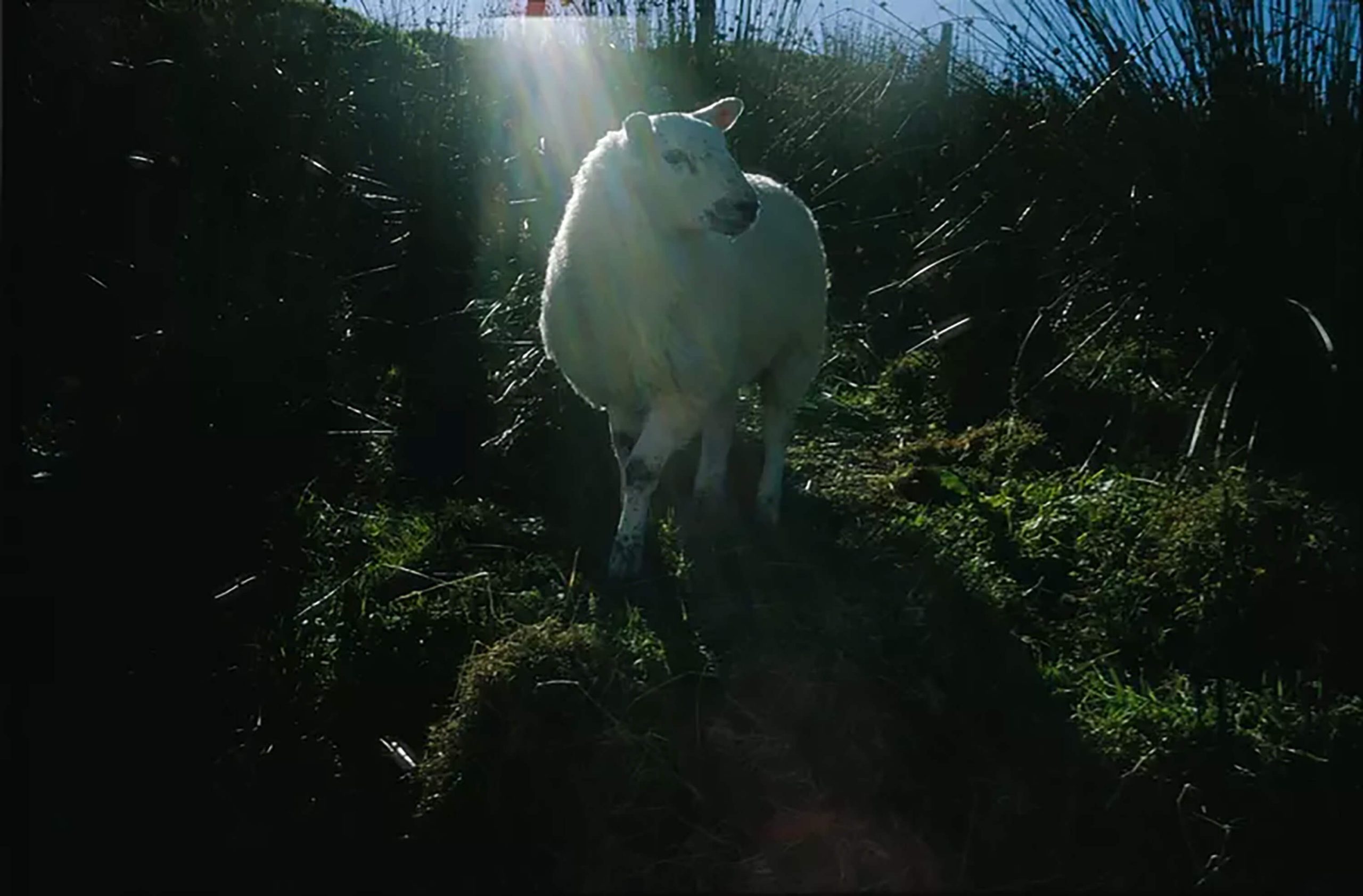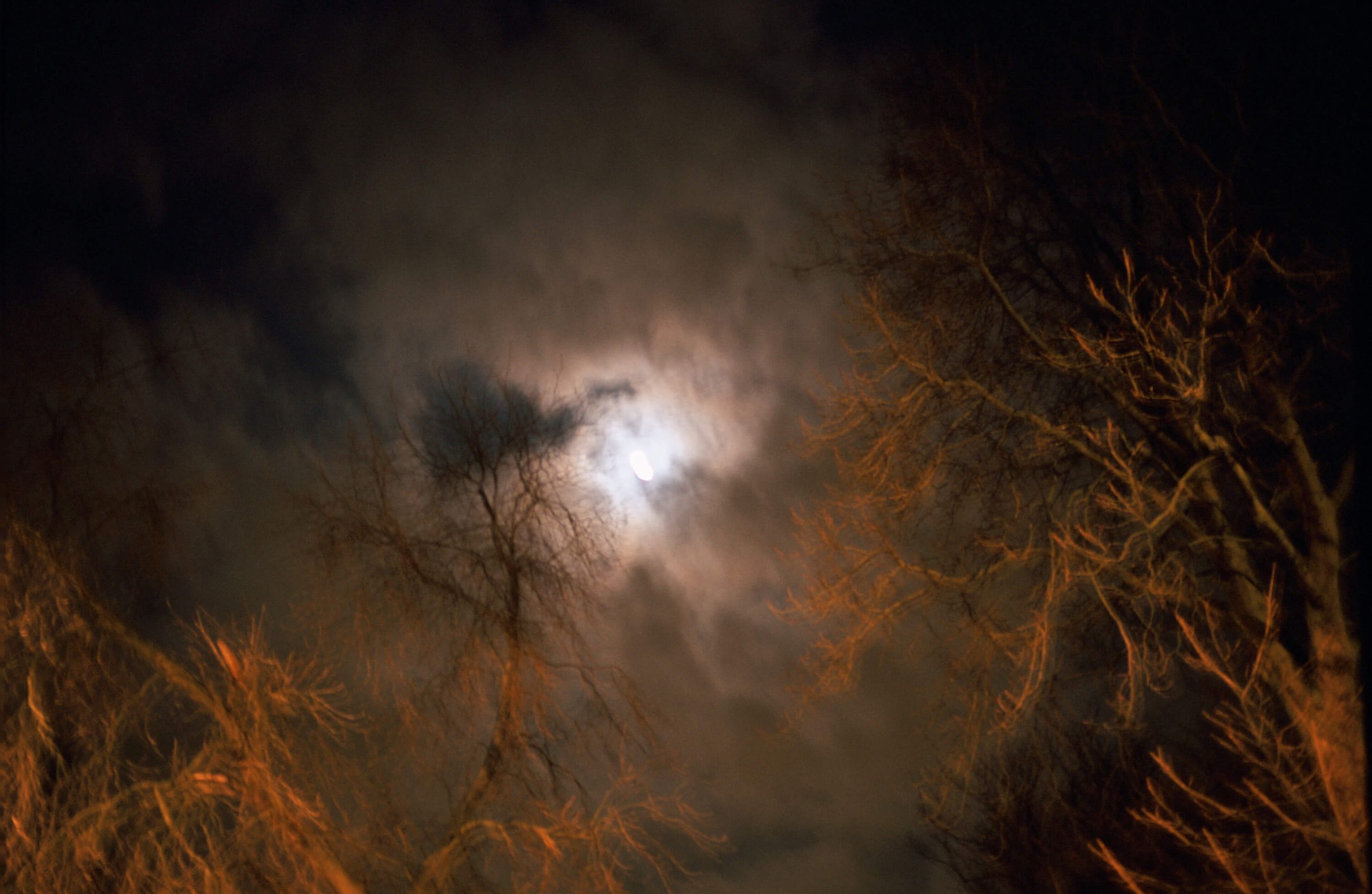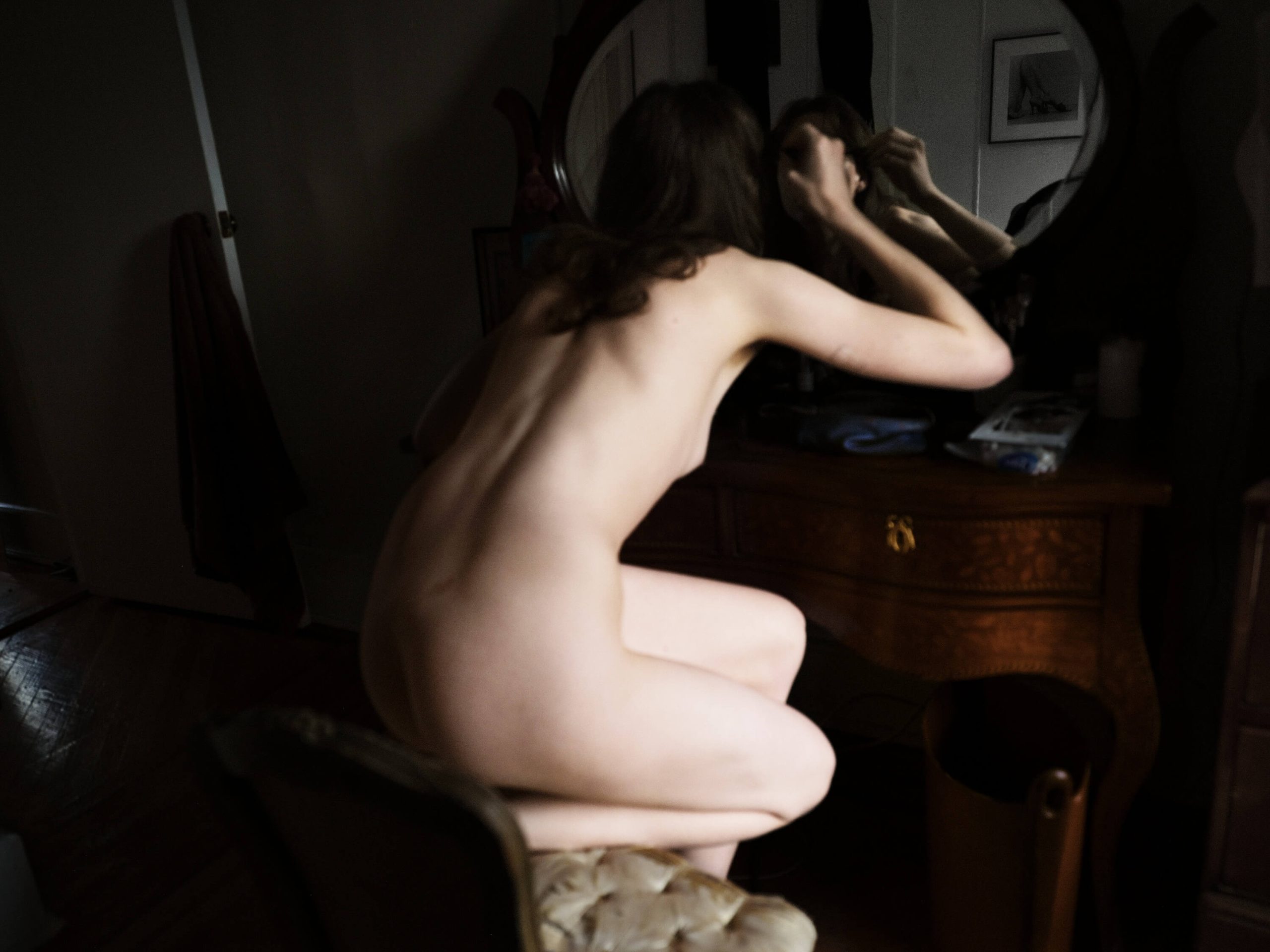At Gagosian Basel, Nan Goldin: Full Moon running from November to January 2024, features Sirens (2019–2020), the first film made by the photographer to exclusively use found video footage. The work follows in a path set by Goldin who, as a photographer influenced by film since the 1970s, has often used interactive multimedia to exhibit her images.
This approach was first set out with The Ballad of Sexual Dependency, exhibited in slideshow form in the early 1980s. Explaining this way of working to Aperture in 2002, Goldin said that it was her intention to make “cinematic work out of still images, and the editing is where I feel my intelligence lies.” When The Ballad of Sexual Dependency was first screened to her peers, Goldin took on the role of an editor of her images, showing some 100 photographs at nightclubs in New York City.
The Ballad of Sexual Dependency was a visual diary documenting her life and those of her friends living on the fringes and in the underground scenes of the city. The photographs shown as part of The Ballad of Sexual Dependency capture the breadth of emotions and experiences that Goldin and her peers encountered: images depict and grapple with themes of love, sex, joy, violence, pain and loss, at a time when the AIDs epidemic was beginning to take hold.
In 1985, The Ballad of Sexual Dependency was screened at the Whitney Biennial and published as a book the following year. Goldin has continued to show the work in different settings, and over time, it has grown to include several hundreds of images. In the intervening years, many of those depicted in Goldin’s images—her friends and chosen family—have passed away, something that has only confounded the sense of loss that was so central to the work in its original form. In this way, The Ballad of Sexual Dependency is not simply a collection of photographs, but an ever-changing multimedia odyssey.

More recently, Goldin has taken on the task of creating work in a more explicitly cinematic sense. Sirens, which takes its name from the sirens in Greek mythology whose enchanting calls lured sailors to their death, is compiled largely of film clips that are woven together to create an impression of drug addiction. Sirens includes clips from films by directors such as Kenneth Anger, Lynne Ramsey and Henri-George Clouzot, as well as footage of the actress and model Donyale Luna (attributed as the first Black supermodel), from Andy Warhol’s Screen Test (1964) and Federico Fellini’s Satyricon (1969). The work is also dedicated to Luna, who died from a heroin overdose at the age of 33 in 1979.
With its haunting score composed by Mica Levi, Sirens teeters between a romantic depiction of being high, while its title and dedication to Luna, who in one clip is depicted on a rising platform wearing an outfit made from metal (a scene taken from the satirical arthouse film Who Are You, Polly Maggoo (1966), directed by William Klein), and which hints at the darker depths of addiction.
At Gagosian, Sirens is screened alongside photographs taken by Goldin between 1979 and 2021. From the earliest image on show, Trixie on the cot, NYC, taken on the set of Vivienne Dick’s film, Liberty’s Booty (1980), to the most recent, Thora at my vanity, Brooklyn, taken during the pandemic when the writer Thora Siemsen quarantined with Goldin, the works in Full Moon are explorations of both the sensuality of the body, and intimate depictions of those nearest to her. For example, the warmth of a close embrace by mother and daughter in Charlotte and Marie-Anne watching sunset, Christmas Eve, Sète, France (2003) encapsulates a tenderness that has often permeated Goldin’s work, while in Kim in rhinestones, Paris (1991), the orange hues that dance around the photographer’s subject radiate with a sensualness.

Goldin’s portraits at Gagosian are contrasted with images that focus on the notion of the spiritual as it is rendered in nature (a theme and subject matter that she has explored since the 1980s). Yet, the way that Goldin frames the subjects here with light—with a lens flare in Holy Sheep, Rathmullen, Ireland (2002) and the reflection of light on the clouds that surround the Full moon over Bois de Vincennes, Paris (2004)—demonstrate a similar tenderness that is evoked by the portrait works on display.
Even at their grittiest and most brutal, Goldin’s images have always sought to grapple with understanding human nature. These images do not discriminate between societal norms or conventions: in that way, they reflect the work of someone for whom friends become chosen family. As The Ballad of Sexual Dependency demonstrates, photography for Goldin became a way to keep track of those around her, especially for someone for whom life has often been marked by loss (she was 11 when her older sister, whom she was particularly close to, died by suicide). By the late 1980s, as the AIDS epidemic tightened its grip, Goldin had lost many peers, and was herself recovering from a heroin addiction in rehab.
In recent years, Goldin has documented her addiction to, and campaigned against, the prescription drug OxyContin, which has contributed to the growing opioid crisis in North America over the course of the twenty-first century. Through the establishment of the activist group PAIN (Prescription Addiction Intervention Now) in 2019, Goldin has sought to campaign against big pharma company Purdue Pharma, owned by the Sackler family whose name is often affiliated with large cultural institutions across the world through art donations.


If Sirens captures a sense of the romanticised thrill of drug-taking (something Goldin has described her young self as actively having done), her depictions of addiction to drugs like OxyContin in the 2010s cast off the glamour and joie de vivre that characterised The Ballad of Sexual Dependency. In a way, such a contrast hints at the multifaceted and complicated nature of both Goldin’s images and the stories that her work tells.
At Gagosian Basel, the focus of the show turns to seeking out moments of contentment, wherever they seem to appear. As a quote by Goldin attached to the exhibition puts it, “When you forget to look at someone close to you for a long time and suddenly you look, it’s a revelation. That’s been my relationship to the world and what I’ve been photographing since I was fifteen.”
